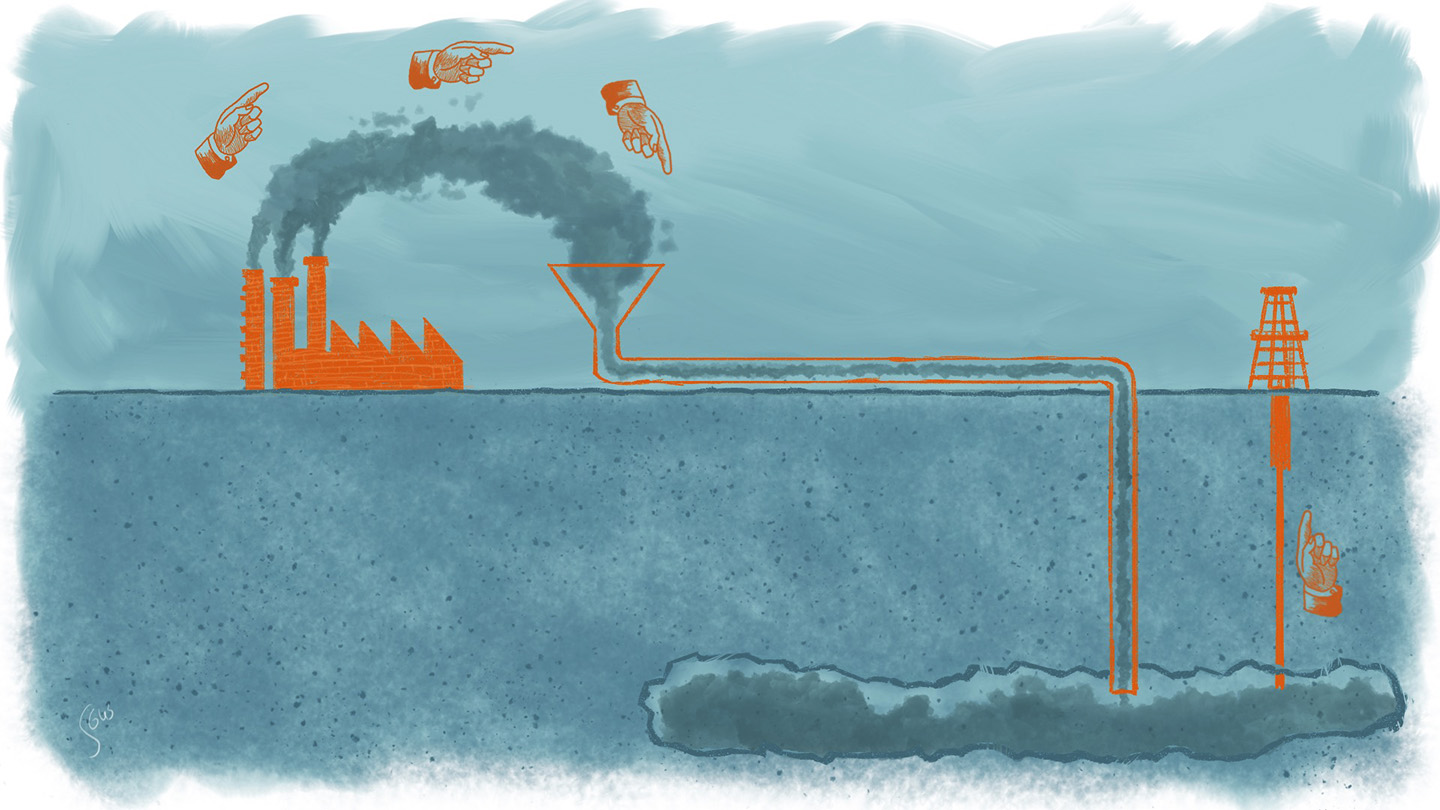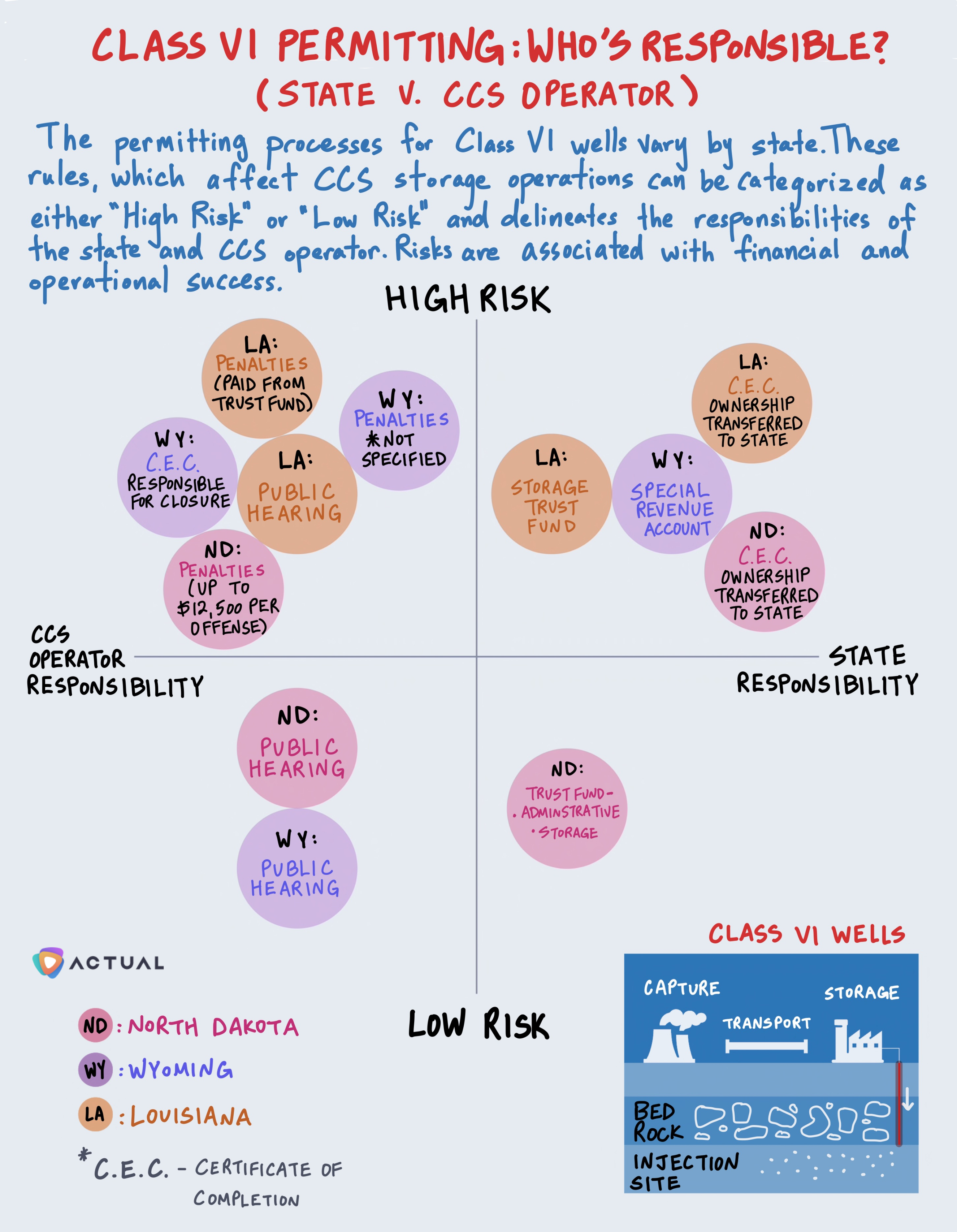
September 07, 2023
Permitting Reform: An Opportunity for CCS to Lead the Way
Permitting processes have historically been the bane of the energy industry. This pain is widely shared across stakeholders, all of whom have related concerns and recommendations: grid operators have urged regulators to streamline permitting for clean energy infrastructure, and fossil fuel companies have expressed that permitting delays will prevent them from achieving mandated GHG emissions reductions in a timely manner.
To mitigate this concern, some fossil fuel companies are installing carbon capture systems (CCS) to reduce their GHG emissions. This presents an opportunity for permitting reform: several states have successfully expedited and implemented new permitting processes that are enabling fossil fuel plants to adopt climate mitigation technologies more readily.
How does this affect you?
Natural gas plants should take advantage of CCS and consider renewable natural gas (RNG) fuel to further reduce their emissions profiles.
Oil and gas companies should seek additional solutions to reduce their overall emissions, including the decommissioning of under-performing wells in order to reduce GHG emissions more broadly.
CCS developers and operators should focus on successfully developing projects that are economically and environmentally advantageous in order to prove the value of CCS to other states considering speedier permitting processes.
Regulators need to understand the role that natural gas will play in their jurisdiction, and create policies that help to negate associated GHG emissions.

Two states, North Dakota and Wyoming, have been delegated authority by the EPA to administer certain well classes (Class VI), and the EPA recently announced its intent to approve Louisiana’s authority. Class VI permits can take about 3-6 years to work their way through the federal system, whereas states can process these applications in as little as 8 months.
It’s no surprise that these three states have pushed for primacy. North Dakota ranks third in both crude oil reserves and production, Wyoming has been the top coal-producing state, and Louisiana ranks third in natural gas production. These states rely heavily on oil and gas economically and in energy production.
Although permitting policies vary state by state, they all aim to achieve the same goals of safe and accelerated CCS investments. There is risk associated with both the financing and the long-term success of these projects.
Trust Fund: All three states require some form of a monetary fund dedicated to monitoring, testing, and maintaining storage facilities during both the operation and closure of any sites. The amount of money required for each fund varies between the states and is determined by fee structures set by each state’s commission plus a fee on each ton of CO2 injected for storage. While North Dakota has two types of trust funds set aside (operational and administrative), Wyoming and Louisiana are at a higher risk of dealing with responsibilities as the trust funds depend on a variety of factors like penalties, private contributions, and interest.
Penalties: Unlike the two other states, North Dakota clearly outlines an amount of up to $12,500 per offense if requirements set out in the permitting process are not met.
Public Hearing: The risks associated with public hearings are litigious in nature: if there is a smaller or insufficient window for public feedback, states are at risk of litigation holding up their projects.
Certificate of Completion: After a state-specific period of time, CCS operators will be awarded a Certificate of Completion. At this point, ownership and responsibility for the facility would be transferred to the state in both North Dakota and Louisiana (for Louisiana, the viability of this transfer is determined by whether or not there are sufficient funds in the Storage Fund). In Wyoming, CCS operators maintain the responsibility and cost of closing down facilities at the end of their lifetime.
The specific combination of risks varies by state based on their particular rules, and together can be categorized as either “High Risk” or “Low Risk”, and directly affect both CCS storage operations and identify responsible entities.
It is important to recognize that CCS technology can have long-term geological impact and unintentional release of CO2 can have adverse health impacts on nearby communities.
While CCS is one solution, shifting generation from higher-emitting to lower-emitting power plants will also reduce emissions and should be considered as well.
The movement towards state-level permitting reform is a positive sign that states are pushing for policies that allow them to meet climate-related mandates. However, whether states are granted primacy or the EPA continues to make final decisions, the permitting process needs to be simplified and untangled.
Until next time,
Actual
More recent newsletters
April 25, 2024
ACTUAL
Catalonia, Spain, has recently declared a drought emergency as reservoirs plunge to critically low levels at just 15% of full...
April 11, 2024
ACTUAL
The automotive industry has been undergoing a drastic transformation, transitioning from combustion engine vehicles to include EVs, hybrid engines, and...
March 21, 2024
ACTUAL
The thrilling races of Formula 1 are powered by behind-the-scenes innovation, where even the slightest tweaks in aerodynamics or engine...


